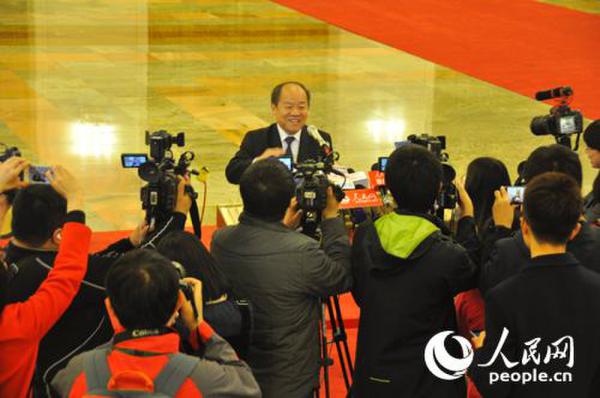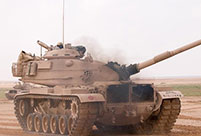


Ning Jizhe, head of the National Bureau of Statistics of China
China’s supply-side structural reform has scored positive results, Ning Jizhe, head of the National Bureau of Statistics of China (NBS) told reporters on Monday, citing optimized industrial, investment and consumption structures.
A new economy led by information technology and high-tech industry is just around the corner, said Ning, referencing the thrilling match between South Korean Go master Lee Se-dol and the artificial intelligence AlphaGo as he said that Chinese robot output has already increased by 17 percent in the first two months of this year.
He noted that the output of new energy vehicles also doubled in that same period. At the same time, the production of crude steel dropped by 5.7 percent and output of nonferrous metal also declined by 4.3 percent.
Ning, also a deputy director of the National Development and Reform Commission, pointed out that the data indicated that China’s economy underwent stable growth in January and February, citing the stable fundamentals in employment, domestic demands and commodity prices.
In the first two months of the year, the registered unemployment rate in 31 major cities stood at about 5.1 percent, lower than that of the same period in last year, said Ning. Fixed-asset investment was up 10.2 percent from a year earlier.
Retail sales, used as a measure of domestic consumption, maintained steady growth of 10.2 percent in the same period, implying that China’s economy now relies more on domestic demands.
The country’s industrial, investment and consumption structures have been optimized, according to the NBS head.
He said that the Consumer Price Index (CPI), a main gauge of inflation, increased by 1.8 percent year-on-year in January and by 2.3 percent in the following month, which still falls short of the goal to "keep the increase in CPI at around 3 percent" set in this year’s government work report. Commodity prices demonstrated a stable rise without large fluctuations.
Though industrial growth slowed, growth in the service industry was rapid. It accounted for more than 50 percent of total GDP, further optimizing the economic structure, Ning said.
Hailing a better investment structure, Ning said that China has invested more in the high-tech and infrastructural sectors but less in energy-intensive industries.
Income from tourism saw double-digit growth during the Spring Festival holidays, witnessing a drop in banquet and tourism at the public’s expense but an increase in mass catering and tourism, Ning said, adding that in the first two months, income from the catering sector also soared 11.3 percent from a year earlier.
 Beautiful Kapok flowers bloom in Hainan
Beautiful Kapok flowers bloom in Hainan Eye-catching beauties in Chunxi Road of Chengdu
Eye-catching beauties in Chunxi Road of Chengdu Wedding pictures of Wu Qilong, Liu Shishi released
Wedding pictures of Wu Qilong, Liu Shishi released One of world's largest military drills in Saudi Arabia
One of world's largest military drills in Saudi Arabia Iron lady or goddess? Sportswomen's dress show
Iron lady or goddess? Sportswomen's dress show Versatile female soldiers in military camp
Versatile female soldiers in military camp Top beauties in Chinese provinces
Top beauties in Chinese provinces Follow me to my Weibo
Follow me to my Weibo Chinese ships keep close watch on U.S. Navy aircraft carrier strike group in S. China Sea
Chinese ships keep close watch on U.S. Navy aircraft carrier strike group in S. China Sea Top 20 hottest women in the world in 2014
Top 20 hottest women in the world in 2014 Top 10 hardest languages to learn
Top 10 hardest languages to learn 10 Chinese female stars with most beautiful faces
10 Chinese female stars with most beautiful faces China’s Top 10 Unique Bridges, Highways and Roads
China’s Top 10 Unique Bridges, Highways and Roads Batman and Superman fight for the Chinese fans’ love... and their money
Batman and Superman fight for the Chinese fans’ love... and their money Locke denies US reviews target Chinese firms despite rise in probes
Locke denies US reviews target Chinese firms despite rise in probes Chinese surrogate buyers go on shopping sprees in Japan
Chinese surrogate buyers go on shopping sprees in Japan Trump opens Pandora’s box in US
Trump opens Pandora’s box in USDay|Week